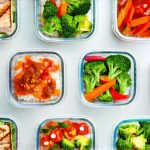As men approach their 40s, subtle changes begin to occur within the body – often unnoticed until they become disruptive. One area frequently affected is bladder function. While not always discussed openly, an increasing number of men experience shifts in urinary control, frequency, and urgency. These changes aren’t necessarily a sign of illness, but rather a natural consequence of aging combined with lifestyle factors. Understanding how diet plays a crucial role in managing these changes can dramatically improve quality of life. This isn’s about bladder-aware food preparation – making informed choices that support urinary health without sacrificing enjoyment of food.
Many men associate bladder issues with older age and assume they’re unavoidable. However, proactive steps related to diet and hydration can significantly mitigate these concerns. Often overlooked is the direct link between what we consume and how our bladder behaves. Certain foods and drinks act as diuretics (increasing urine production) or irritants (inflaming the bladder lining), while others offer soothing properties. The goal isn’t elimination but modification – learning to identify potential triggers and incorporating supportive food choices into daily routines. This article will explore practical, actionable strategies for men over 40 seeking to optimize their dietary habits for a healthier, more comfortable urinary experience.
Understanding the Dietary Triggers
The relationship between diet and bladder health is complex. It’s not a one-size-fits-all scenario; individual sensitivities vary greatly. However, there are common culprits that tend to exacerbate bladder symptoms in many men. Caffeine is a prime example—found not just in coffee but also tea, soda, and even chocolate—it acts as a diuretic, leading to increased urine production and potential urgency. Similarly, alcohol can have the same effect, while also disrupting sleep which can further impact bladder control. Spicy foods, though enjoyable for some, contain compounds that can irritate the bladder lining, causing discomfort and frequent urination. If you’re looking for ways to manage your diet alongside other urological concerns, consider exploring meal structuring tailored for BPH symptoms.
Acidic foods are another significant category. Citrus fruits and juices (orange, grapefruit, lemon), tomatoes and tomato-based products, and vinegar-rich dressings can all contribute to bladder irritation. Artificial sweeteners, while often marketed as healthier alternatives, have been linked to increased urinary frequency in some individuals. Recognizing these potential triggers is the first step toward creating a more bladder-friendly diet. It’s important to note that eliminating foods entirely isn’t always necessary; simply reducing intake or being mindful of portion sizes can make a substantial difference. Keeping a food diary and tracking associated symptoms can help identify personal sensitivities. In fact, keeping a daily food diary can be invaluable for pinpointing your specific triggers.
Finally, it’s crucial to consider fluid intake. While adequate hydration is vital for overall health, excessive fluid consumption – particularly before bedtime – can overload the bladder and lead to nighttime awakenings. The key is balanced hydration throughout the day, with a reduction in fluids several hours before sleep. Don’t confuse thirst with hunger; often, what we perceive as hunger is actually dehydration.
Hydration Strategies for Bladder Health
Maintaining proper hydration is paramount, but how you hydrate matters just as much as how much you drink. A consistent intake throughout the day—rather than large volumes at once—is far more bladder-friendly. Aim for a steady sipping pattern rather than gulping down fluids. Consider spreading your fluid intake evenly across waking hours and decreasing it significantly in the evening to minimize nighttime trips to the bathroom.
Here’s a step-by-step approach to optimizing hydration:
1. Begin your day with a glass of water.
2. Carry a reusable water bottle as a visual reminder to sip throughout the day.
3. Drink small amounts (4-6 ounces) every 2-3 hours.
4. Limit fluid intake 2-3 hours before bedtime.
5. Choose hydrating foods like watermelon, cucumbers, and soups.
Beyond plain water, certain beverages can actually support bladder health. Herbal teas (avoiding those with caffeine), diluted cranberry juice (unsweetened), and coconut water are all good options. Conversely, limit or avoid caffeinated drinks, alcohol, carbonated beverages, and sugary juices. Paying attention to the color of your urine is also a useful indicator of hydration levels – pale yellow generally signifies adequate hydration, while dark yellow suggests you need to drink more fluids. For those struggling with consistent hydration, exploring optimal urinary balance through hydration habits may be helpful.
It’s important to remember that individual fluid needs vary depending on activity level, climate, and overall health. Listen to your body’s signals and adjust your intake accordingly. Don’t force yourself to drink excessively if you aren’t thirsty; let thirst be your guide. Prioritizing consistent, moderate hydration is far more beneficial than sporadic, large volumes of fluid.
The Role of Fiber in Urinary Health
Fiber isn’t typically associated with bladder health, but it plays a surprisingly important role. Adequate fiber intake promotes healthy bowel function, and constipation can put extra pressure on the bladder, leading to increased urgency and frequency. A constipated colon essentially presses against the bladder, reducing its capacity and triggering unwanted sensations.
Incorporating more soluble fiber into your diet is particularly beneficial. Soluble fiber dissolves in water to form a gel-like substance that helps soften stool and promote regularity. Excellent sources include oats, barley, apples, bananas, beans, and lentils. Insoluble fiber adds bulk to the stool and also aids in digestion, but soluble fiber is more directly linked to bladder comfort.
Beyond preventing constipation, fiber can also help regulate blood sugar levels. Fluctuations in blood sugar can impact nerve function, including those controlling the bladder. By stabilizing blood sugar, fiber indirectly supports healthy bladder control. Aim for 25-30 grams of fiber per day – gradually increase your intake to avoid bloating and discomfort. Remember to drink plenty of water alongside increased fiber consumption to prevent constipation from occurring in the first place. To help streamline dietary changes, you might find simple urology menus particularly useful.
Modifying Food Preparation Techniques
Often, it’s not just what you eat but how you prepare it that impacts bladder health. Simple modifications to cooking methods can significantly reduce irritation. For example, instead of frying foods, opt for baking, grilling, or steaming – these methods require less added fat and are generally easier on the digestive system. When using spices, start with small amounts and gradually increase them based on your tolerance level.
Consider reducing acidity in dishes by avoiding excessive use of tomatoes, citrus juices, and vinegar-based dressings. If you enjoy tomato sauce, look for low-acid varieties or balance the acidity with other ingredients. Similarly, when preparing meals containing onions or garlic – known bladder irritants for some – try cooking them thoroughly, as this can lessen their potency.
Finally, pay attention to portion sizes. Overeating puts extra pressure on the abdomen and bladder, increasing the risk of leakage and discomfort. Smaller, more frequent meals are generally easier on the digestive system and less likely to trigger bladder symptoms. Mindful eating – paying attention to hunger cues and savoring each bite – can also help prevent overeating and promote better digestion. You could supplement these habits with food prep habits that prevent hidden bladder triggers for a comprehensive approach.
It’s essential to remember that these are general guidelines, and individual responses vary. If you’re concerned about your bladder health, consult with a healthcare professional for personalized advice. Understanding how to create urology-safe meal plans can be an excellent starting point.





















